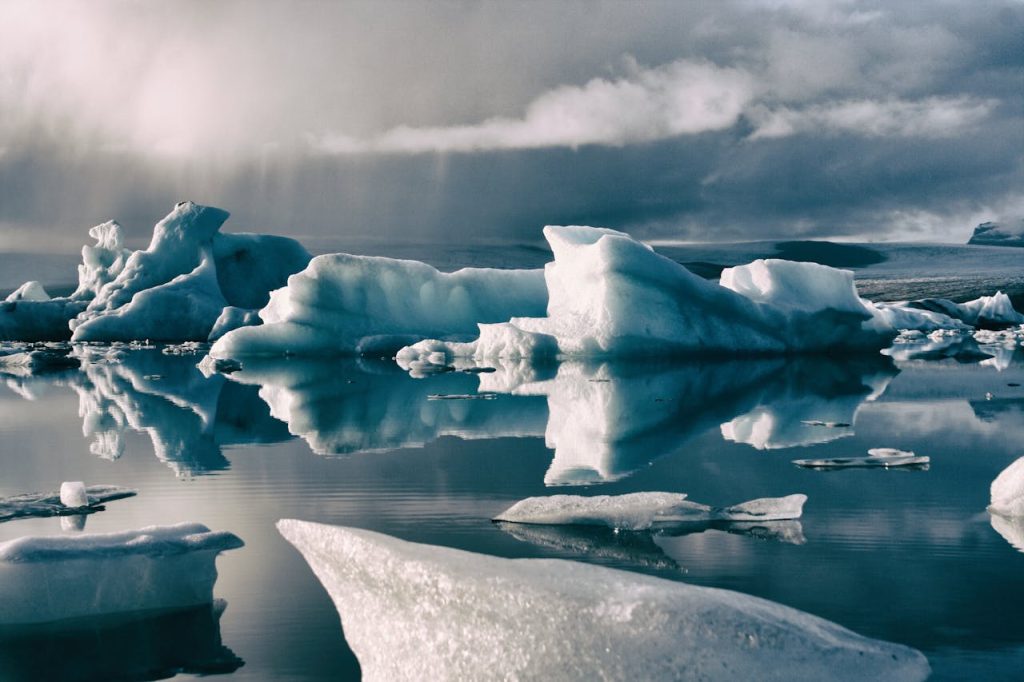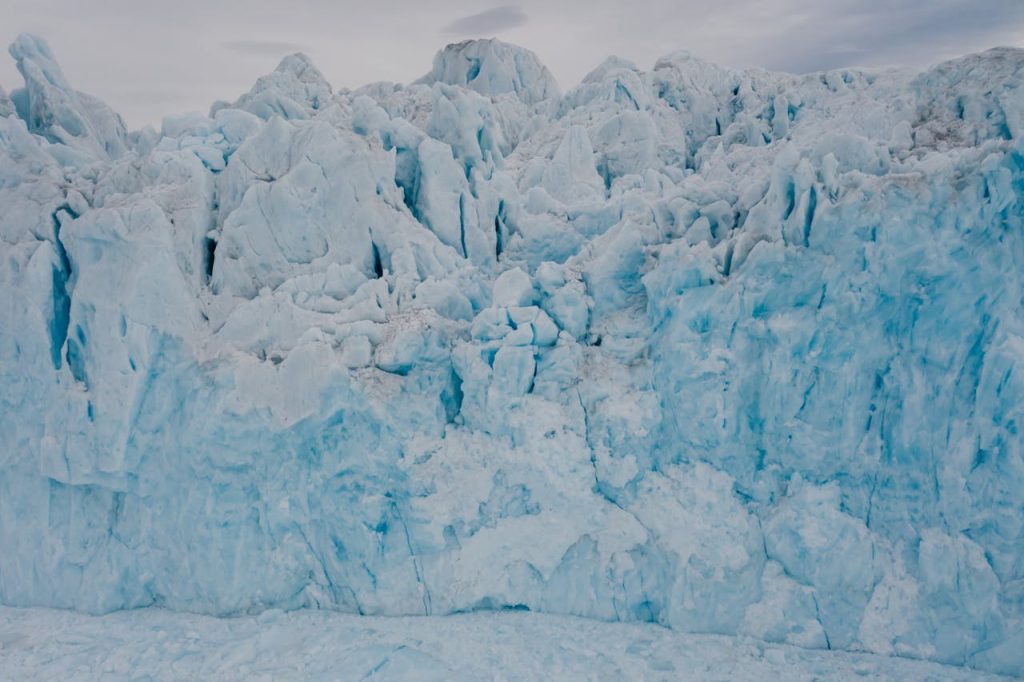Your cart is currently empty!
Shocking Before and After Photos Show Glacier Nearly Disappearing Due to Climage Change

When climate change is discussed in public forums, it is often framed through statistics, projections, and technical models. While these tools provide important data, they can feel distant to the average observer. What tends to resonate more deeply are images that capture the effects in real time. A striking example is the before-and-after photographs of glaciers that once dominated entire valleys but now reveal bare rock and sediment in their place.

These images do more than illustrate environmental change. They highlight the collapse of natural systems that have long stabilized ecosystems and supported human life. Glaciers, after all, are not simply frozen water. They are critical resources that regulate rivers, preserve historical records of the Earth’s climate, and provide water for agriculture and communities. Their disappearance is not confined to remote regions of the Arctic or Himalayas. The effects reverberate globally, from shifting coastlines to food supply disruptions, underscoring the growing urgency of the climate conversation.
Photographs as Undeniable Evidence
While climate models and statistical projections can be difficult for the general public to interpret, photographs of glaciers receding leave little room for debate. One of the most well-documented efforts to capture this transformation is the Extreme Ice Survey (EIS), founded in 2007. With 43 cameras installed across 24 glaciers, the program has amassed hourly images for more than a decade, creating a visual archive that shows ice retreat in stark, unfiltered detail. These images bypass the need for technical explanation. They are evidence in their rawest form.
The changes they record are dramatic. Alaska’s Columbia Glacier retreated roughly 6.5 kilometers between 2009 and 2015. Switzerland’s Stein Glacier shrank by 550 meters in less than ten years. As Gregory Baker, lead author of a study published in GSA Today, emphasized, “These are simply photos … straightforward proof of large-scale ice loss around the globe.”
The impact extends far beyond visuals. Rising sea levels remain the most publicized consequence, but melting glaciers also destabilize water supplies that depend on seasonal ice runoff. In addition, they hold irreplaceable scientific records. Air bubbles trapped in ancient ice preserve snapshots of the Earth’s atmosphere, while pollen and volcanic ash provide insight into ecosystems and events of the past. Glaciers are vanishing, and as they do, they are erasing natural archives. This loss is taking with it data that could help us understand today’s rapid climate changes.
When Ice Loss Redraws the Map
Glacier retreat is more than an environmental talking point. It is a force reshaping human geography. In coastal cities, the connection is immediate. As ice sheets in Greenland and Antarctica continue to melt, sea levels rise and shorelines shift. Miami faces flooding on otherwise clear days, Jakarta is relocating its capital city to escape encroaching water, and Dhaka contends with tidal surges that disrupt daily life. These aren’t abstract warnings; they are unfolding realities. They carry immense financial, cultural, and human costs.
But the influence of glaciers extends far beyond coastlines. In Asia, they feed some of the world’s most important rivers, among them the Ganges and the Mekong. These rivers sustain more than a billion people through drinking water, agriculture, and energy. The destabilization of these flows, whether in the form of sudden flooding or prolonged drought, directly threatens livelihoods and food security. The concept of “water wars” has often been considered speculative, but as supplies tighten, the risk of conflict becomes harder to dismiss.

Nature itself also feels the pressure. From Alaska’s salmon runs to the fragile ecosystems of alpine meadows in Europe, glacial meltwater underpins complex webs of life. As the ice vanishes, so too does the stability of these ecosystems, leading to cascading effects that are only beginning to be understood. The loss of glaciers functions less as an isolated issue and more as a multiplier of global challenges.
Glaciers as Living Archives
Glaciers are often described as frozen landscapes, but they are more accurately living archives—repositories of information that span hundreds of thousands of years. Each layer of ice preserves fragments of the past: bubbles of ancient air that reveal atmospheric composition, grains of pollen that trace long-vanished ecosystems, and even volcanic ash carried across continents by historic eruptions. When scientists drill into ice cores, they are effectively opening sealed records of Earth’s environmental history.
Some of the most striking discoveries have come from Antarctica, where deep cores have revealed atmospheric conditions dating back 800,000 years. These records provide essential comparisons between today’s carbon dioxide levels and natural baselines, making clear how unprecedented the current trajectory is. In smaller glaciers, however, these opportunities are being lost. As the ice melts, the records dissolve, taking with them data that can never be recreated.
The implications are significant. Without these frozen archives, science loses a critical tool for understanding how climate systems have shifted in the past and how ecosystems adapted or failed to adapt to those changes. For society at large, the loss is more than scientific. It represents a fading connection to the Earth’s deeper history, a story that places today’s environmental challenges in long-term perspective. What makes this moment unique is that we are the first generation able to decode these icy records, yet we may also be the last to have the chance.
The Human Cost of Vanishing Ice
For much of the public, the reality of glacier loss is communicated less through scientific papers than through striking visuals. Time-lapse photography has condensed decades of retreat into sequences that are impossible to ignore. The Extreme Ice Survey, led by James Balog and his team, has been central in bringing these images to the world, translating the slow pace of geologic change into a form that resonates immediately. A glacier reduced to bare rock over the span of a few frames conveys urgency more effectively than any data set.
Yet beyond the scientific and visual records lies a human dimension. In regions from the Andes to the Himalayas to Alaska, glaciers hold cultural and spiritual significance. They are seen as guardians, water providers, and sacred entities woven into the fabric of local traditions. Their disappearance represents not just the loss of a natural resource but also the erosion of identity and belonging. Communities that have lived in the shadow of these glaciers for generations are now grappling with both ecological disruption and cultural displacement.

The psychological impact is increasingly recognized. Researchers describe phenomena such as “ecological grief” and “climate anxiety,” terms that reflect the distress of watching familiar landscapes disappear. At the same time, the visual documentation of glacial retreat has helped elevate awareness on a global scale. From documentaries to museum exhibitions, these images are reframing the climate conversation, moving it from abstract projection to lived reality. In showing what has already been lost, they underscore the urgency of protecting what remains.
Everyday Steps Toward Climate Awareness
The disappearance of glaciers often feels like a challenge too vast for individuals to address. Yet experts emphasize that the path forward is shaped as much by collective habits as by global policies. Small, consistent choices in daily life can reduce pressure on the planet while also building momentum for larger systemic change.
- Conserve energy at home. Small adjustments in daily routines can significantly reduce emissions. Switching to LED lighting, unplugging devices when not in use, and using fans or natural airflow instead of air conditioning when possible all add up over time. These habits not only lower household energy bills but also cut down on unnecessary carbon output.
- Rethink transportation. Choosing alternatives to single-passenger car trips is one of the most direct ways to lower personal carbon footprints. Public transit, biking, walking, or even grouping errands into fewer trips helps reduce fuel consumption. For those in the position to upgrade, investing in a fuel-efficient or electric vehicle can create lasting impact.
- Adopt sustainable eating habits. Research shows that diet is closely tied to emissions. Incorporating more plant-based meals, reducing red meat, especially beef, and buying local or seasonal produce can make a measurable difference. These choices lessen the environmental burden of industrial agriculture and reduce the emissions linked to transporting food across long distances.
- Reduce waste and plastics. Everyday items like reusable bags, water bottles, and coffee cups are effective tools against single-use plastic pollution. Recycling and composting further prevent unnecessary landfill buildup. Supporting companies that prioritize sustainable packaging extends that impact beyond the household.
- Engage in public awareness and advocacy. Personal change is powerful, but collective action amplifies results. Sharing reliable information, discussing climate issues openly with peers, and supporting leaders and policies that invest in renewable energy contribute to broader cultural and political momentum. Visibility is a critical step toward systemic change.
- Take care of mental well-being. The growing recognition of “climate anxiety” highlights the psychological toll of environmental change. Finding ways to channel concern into constructive action, such as joining local sustainability projects or participating in community clean-ups, helps transform worry into agency. Balancing information intake with restorative time outdoors can also maintain a healthier perspective.
While individual actions cannot halt glacier loss on their own, they demonstrate how change begins at the personal level. Each step, when multiplied across millions of people, becomes part of a larger cultural shift. This shift not only slows the pace of climate change but also redefines how societies live with greater awareness and responsibility.
A Global Story Written in Ice
Glaciers have long stood as silent fixtures of the natural world, but their rapid retreat has transformed them into visible markers of a planet in transition. They are at once water sources, cultural symbols, scientific archives, and ecological stabilizers. Their loss resonates far beyond mountain ranges and polar regions, touching coastlines, food systems, and even mental health.
What makes this moment distinct is that the changes are both scientifically documented and visually undeniable. Time-lapse photography, ice core research, and community testimony all converge on the same reality: the cryosphere is shrinking at a pace not seen in recorded history. With it disappears not only frozen water but also chapters of Earth’s story and the stability that billions rely upon.
For readers, the takeaway is twofold. First, the scale of the challenge demands sustained international cooperation, scientific innovation, and policy action. Second, and equally important, individual choices remain meaningful. The way people consume energy, food, and resources and how they raise awareness contributes to shaping the broader cultural response.
In that sense, the story of glaciers is not one of distant landscapes. It is a shared narrative of resilience and responsibility, reminding us that while the ice is retreating, the opportunity to act remains firmly in human hands.
